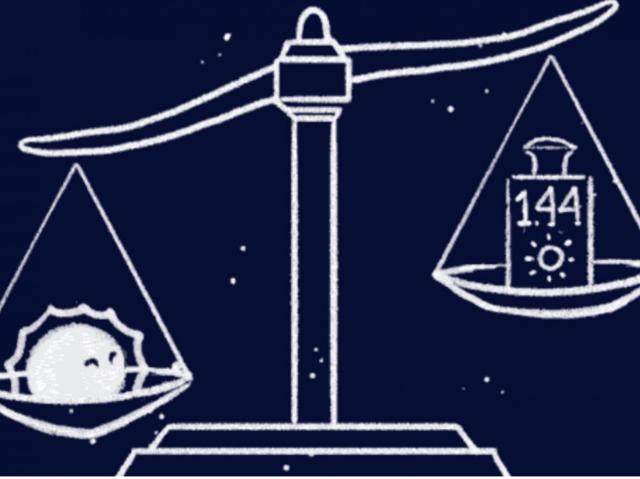When you look up at the sky – at the night’s stars or the day’s sun – you can give a little thanks to Subrahmanyan Chandrasekhar. He helped us find where they came from and told us where they’ll go. Described as a “child prodigy” and hailed as the first astrophysicist to win a Nobel Prize for his theory on the evolution of stars, today would have been his 107th birthday. He was born on 19-10-1910.
His 107th birthday is commemorated in a Google Doodle, which shows him measuring the stars. Google is changing its logo globally to a doodle of him and the Chandrasekhar Limit. That refers to his calculation that once a star reaches 1.44 times the size of our own sun, it doesn’t form a white dwarf as expected but collapses, eventually becoming a black hole.

Chandrasekhar became famous for his discoveries about the evolution of the stars. His work was vast, and he began early, developing his theory of stars’ evolution before he had even turned 20. At just 26, Chandrasekhar was recruited as a deputy professor by the University of Chicago, where he spent the rest of his career.
The most interesting of all is Chandrasekhar’s work is on how the stars will come to an end. He found that some large stars undergo a strange, spectacular death – one that sees them collapse, explode and then disappear.
In the early 1930s, scientists determined that after stars would collapse into white dwarves after they converted their hydrogen and helium stores. White dwarves, which are about the size of Earth, are extremely dense from the compression of the star’s electrons and nuclei. But Chandrasekhar expanded on that understanding, determining that not all stars is created equal. He found that some stars don’t simply stop contracting later in life. Stars that have a mass more than 1.44 times that of our Sun, he found, would continue to contract. That 1.44 figure, known as the Chandrasekhar limit, was a major step in understanding how neutron stars are created, and what sparks supernova explosions.
According to the Open University, English astronomer Sir Arthur Eddington persuaded Chandrasekhar to present his findings at the Royal Astronomical Society in London on January 11, 1935. Eddington then gave a lecture to “demolish the young researcher’s calculations and theory, dismissing it as mere mathematical game playing”.
More than 30 years later, in 1966, scientific research with computers and the hydrogen bomb gave credit to Chandrasekhar’s calculations. Black holes, central to Chandrasekhar’s theory, were identified in 1972. His calculations contributed to the understanding of supernovas, neutron stars, and black holes.
In 1983, at 73 years of age, Chandrasekhar shared the Nobel Prize in Physics with William Fowler for his theoretical studies of the physical processes of importance to the structure and evolution of the stars. He was the nephew of renowned scientist CV Raman, won the Nobel Prize in Physics in 1930.
In his book, Truth and Beauty, Chandrasekhar offered his advice to aspiring scientists:
What a scientist tries to do essentially is to select a certain domain, a certain aspect, or a certain detail, and see if that takes its appropriate place in a general scheme which has form and coherence; and, if not, to seek further information which would help him to do that.


What an incredible read👌👌
LikeLiked by 1 person
Thanks a lot!
LikeLiked by 1 person
Thank you so much for the info🙏🏻
LikeLiked by 1 person
So interesting!
LikeLiked by 1 person
Great post about a great man!
The Science geek
http://www.thesciencegeek.org
LikeLiked by 1 person
Thank you for sharing this wonderful read 🙂
LikeLiked by 1 person
Thank you!
LikeLiked by 1 person
My pleasure, your blog is a treat to eyes
LikeLiked by 1 person
🙏
LikeLike
Thaks for sharing the life story of Subrahmanyan Chandrasekhar. I like how Google has started featuring in their doodles people whose contributions are worth remembering.
LikeLiked by 1 person
Yes, Googles is doing a great job in remembering the great achievers at global level as well as regional level. In case of regional level, they make the doodle only for that region!.
LikeLiked by 1 person